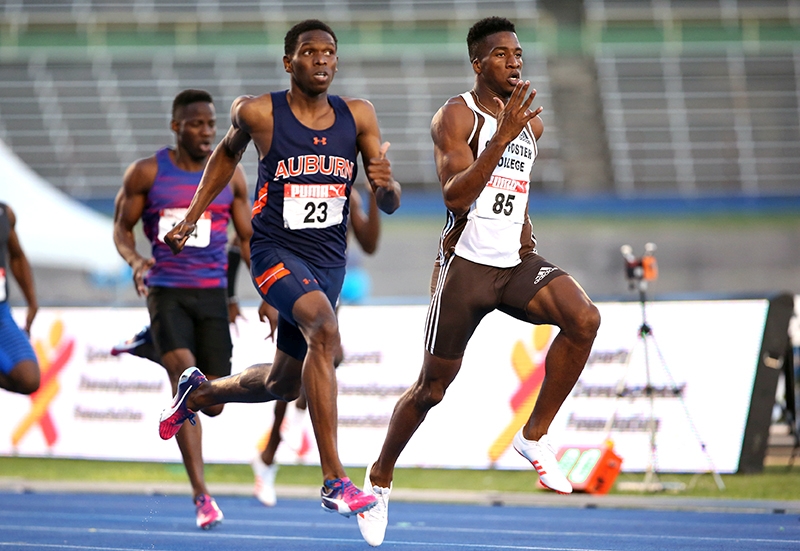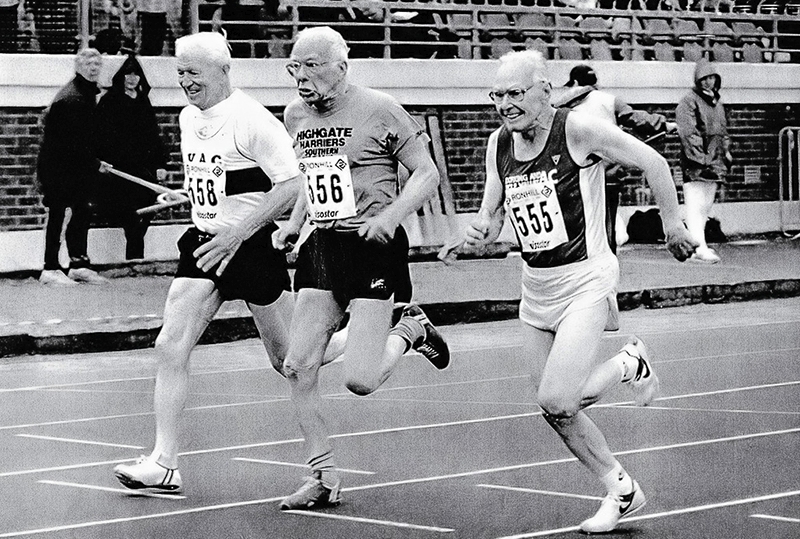You are viewing 1 of your 1 free articles. For unlimited access take a risk-free trial
High-intensity intervals: good for heart health, not just fitness

Andrew Hamilton explains how high-intensity interval training can not only boost endurance performance, but provide cardiovascular health benefits too
This is the time of year to take stock, review your performance, and think about how you can improve your training during the next season. If you're not already including them, regular session of intense intervals should at least be on the training menu. It’s easy to understand why high-intensity interval training (HIIT) has become so popular. Numerous studies have shown that per unit of time invested, high-intensity intervals are far more effective at producing the necessary changes in muscle biochemistry for fitness and performance gains than training at a constant, one-speed pace (steady-state training). But just in case you’re still not convinced of the merits of HIIT, there’s also a growing body of evidence that this type of training produces health benefits above and beyond those induced by longer-duration, moderate-intensity training.Health benefits of HIIT
An example of these benefits can be seen in a study on footballers, which clearly demonstrated that when it comes to long-term cardiovascular health, HIIT is an extremely effective training approach(1). In this study, 24 young male subjects consisting of 16 well-trained footballers playing in the Tunisian Championship League and 8 sedentary non-footballers (the controls) were divided into three experimental groups and were studied for a period of 12 weeks. These groups were as follows:- Eight footballers who carried out their normal football training programme, which consisted of around 11 hours per week of strength, endurance and skill work.
- Eight footballers who carried out their normal football training as above but in addition, performed two sessions of HIIT training per week (each session consisting of repeated 15-second intervals at 105% maximum aerobic velocity (followed by 15 seconds of rest) for 20 minutes per session.
- Controls – eight untrained subjects who performed no training.
The first finding was that (unsurprisingly) the footballers were much fitter aerobically than the sedentary subjects. Also the weight and BMI of the footballers dropped over the 12 weeks, whereas those of the sedentary subjects remained the same. However, the HIIT-trained footballers experienced a significantly greater increase in their aerobic capacity compared to the normal-trained footballers and fitness gains were observed in the HIIT group after only 6 weeks, whereas the normal group only showed a small improvement after 12 weeks. When it came to measures of blood lipids and cholesterol, only the HIIT group improved; in this group, total cholesterol and LDL cholesterol (‘bad’ cholesterol) levels decreased by about 2%, whereas it remained stable in the normal-trained group. When it came to HDL cholesterol (the good sort that is known to protect against cardiovascular disease), it increased in both training groups but the increase was significantly greater in the HIIT group.
The implications for recreational athletes
Many recreational sportsmen and women might assume that only elite athletes seeking maximum performance can benefit from intense exercise such as HIIT. However, the actual evidence tells a very different story because several large epidemiological studies have found that the rates of death from coronary heart disease and all-cause mortality (rates of death from any condition) are much lower among vigorously active individuals than among moderately active individuals. Scientists now believe that HIIT training may be an especially useful mode of training for providing cardiovascular health benefits, because it’s extremely effective at boosting the ability of the hormone insulin to work in the body and control blood sugar(2,3). This study provides further evidence that not only is HIIT a great way to boost fitness and performance, adding a little into your weekly training could reap dividends in terms of your heart health further down the line!Practical guidelines on intervals for novice and experienced endurance athletes
For those new to intervals
- If you’re new to intervals, you should start by adding no more than one interval session per week and cutting back on an existing non-specific workout elsewhere. For example, if you’re training to complete your first half-marathon by building up the mileage on one long run each week, you wouldn’t replace that workout with intervals, but instead replace a less specific session.
- Be gentle on yourself – start easy and work your way into your sessions. For example, instead of aiming for 10 x 1 minutes at 90% of maximum effort from the outset, start with 4 or 5 intervals at 80% effort. Gradually build the number of intervals then build the effort level to 90%
- Try to ensure that you schedule a rest day after your interval session, or at the very least, a day where any training load is very light.
- Ensure you go into your interval session fresh by scheduling a rest day (or a very light training day) the day before. Never do intervals tired.
- Once your body has adjusted to performing intervals and you are finding them more manageable, you can add back in the training session that you initially removed. However, you must still ensure you continue apply principles 3 and 4 above.
- Remember that quality is king; rather than try and add a second interval session too soon and becoming fatigued, aim to ensure that you concentrate on performing a really high-quality interval session once a week.
- Monitor your recovery. If you feel you are becoming fatigued, take a week off from intervals completely.
- Complete beginners to exercise should avoid high-intensity intervals completely until they have built some base aerobic fitness.
For those accustomed to interval training
- Aim for one or two interval sessions per week. However, ensure you adhere to principles 3 and 4 in the section above and space the two sessions as far apart as possible.
- If you are performing two sessions per week, try two different interval sessions to prevent boredom while bearing in mind your overall goals (eg targeting the relevant energy systems in your particular sport/event).
- Use a training diary so you can gauge how different interval sessions work for you – eg easily spot positive (or negative) changes in performance 2-3 weeks down the line as a result of implementing a particular type of interval session.
- If you strength train, try to ensure that you keep your resistance sessions as far apart from your intervals as possible (to help ensure maximum recovery). For example, if you’re interval training on a Monday and Thursday, you should resistance train on the Saturday.
- Try periodising your interval sessions. So for example, you could perform two weeks of 2 sessions per week followed by two weeks of 1 session per week. Or you can block periodise – eg perform intervals two or even three times per week for four weeks then have a complete break for four weeks. The key point is that by varying total workload, you allow your body periods where recovery and adaptation can take place.
- Never perform interval sessions into the run up to a race or match. You’ll just end up sapping your race-day performance.
- Always monitor your recovery and check for signs of overtraining when undergoing an extended period of interval training, especially if you are also performing a high load of steady-state training (eg distance cycling, triathlon, rowing etc).
- Open Access J Sports Med. 2014 Oct 17;5:243-8
- Med Sci Sports Exerc. 2011; Oct;43(10):1849-56
- Int J Obesity 2008; 32 (4): 684–91
Newsletter Sign Up
Testimonials
Dr. Alexandra Fandetti-Robin, Back & Body Chiropractic
Elspeth Cowell MSCh DpodM SRCh HCPC reg
William Hunter, Nuffield Health
Newsletter Sign Up
Coaches Testimonials
Dr. Alexandra Fandetti-Robin, Back & Body Chiropractic
Elspeth Cowell MSCh DpodM SRCh HCPC reg
William Hunter, Nuffield Health
Keep up with latest sports science research and apply it to maximize performance
Today you have the chance to join a group of athletes, and sports coaches/trainers who all have something special in common...
They use the latest research to improve performance for themselves and their clients - both athletes and sports teams - with help from global specialists in the fields of sports science, sports medicine and sports psychology.
They do this by reading Sports Performance Bulletin, an easy-to-digest but serious-minded journal dedicated to high performance sports. SPB offers a wealth of information and insight into the latest research, in an easily-accessible and understood format, along with a wealth of practical recommendations.
*includes 3 coaching manuals
Get Inspired
All the latest techniques and approaches
Sports Performance Bulletin helps dedicated endurance athletes improve their performance. Sense-checking the latest sports science research, and sourcing evidence and case studies to support findings, Sports Performance Bulletin turns proven insights into easily digestible practical advice. Supporting athletes, coaches and professionals who wish to ensure their guidance and programmes are kept right up to date and based on credible science.












